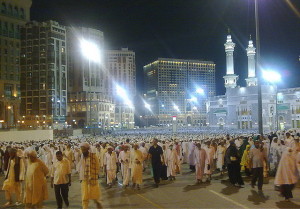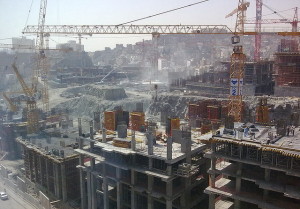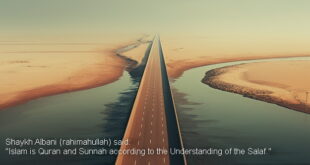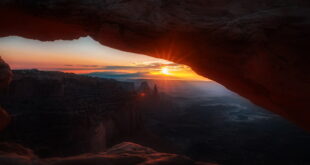 The first thing that strikes you upon entering the holy city from Jeddah is the number of mighty yellow-and red-colored cranes on the skyline from all the ongoing construction projects in Makkah.
The first thing that strikes you upon entering the holy city from Jeddah is the number of mighty yellow-and red-colored cranes on the skyline from all the ongoing construction projects in Makkah.
Where once stood old buildings, multistory hotels and even hills, there is now leveled land fenced off by metal sheets. Inside, construction workers are busy erecting massive towers that will house pilgrims in the coming years.
One of busiest areas on the Holy Mosque’s western side when you enter from Jeddah used to be the Shamia district. It is completely under construction now. This district used to house hundreds of pilgrims from South Asia and Arab countries. Some of the pilgrims who have been to Makkah in the past look longingly at the area and try to figure out where they had stayed on past visits.
“Everything has changed in five years ,” said Mukhtar Nadwi, a pilgrim from Saharanpur, India. “I was here in 2005 along with my wife and my mother. We used to stay at a hotel just opposite Bab Al-Umrah, which is one of the many imposing gates leading into the Holy Mosque. I went there last night to see if I could find the place, but there is no trace of it. The whole area is unrecognizable.”
He wondered where the Bangladeshi man who helped his aging mother those days was.
Pakistani national of Yemeni origin Syed Ashfaq Muscati is also amazed by the speed with which Makkah’s skyline has changed.
“I was here six years ago, and our group of pilgrims was staying in an old building located behind Ibrahim Khalil Road,” he said. “The whole area is now part of the massive Jabal Umar project. I remember the tiny Pakistani eatery where we would go to have our favorite subcontinental food — all that is gone. We are told that huge buildings will be coming up here.”
 Both Nadwi and Muscati are this time staying in Makkah’s Aziziah district. It is quite a distance from the Holy Mosque, but pilgrim establishments and tour operators are providing shuttle services between Aziziah and the Holy Mosque. The free shuttles operate through the tunnels that have been specifically created for these 40-seat coaches.
Both Nadwi and Muscati are this time staying in Makkah’s Aziziah district. It is quite a distance from the Holy Mosque, but pilgrim establishments and tour operators are providing shuttle services between Aziziah and the Holy Mosque. The free shuttles operate through the tunnels that have been specifically created for these 40-seat coaches.
“It is an excellent service. They drop us at the basement of the Makkah Clock Tower, and in a matter of minutes we are in the courtyard of the Holy Mosque. We take a similar route going back,” Nadwi said.
Aziziah district is one of Makkah’s best-planned areas, featuring comfortable accommodation and a road network leading straight to the Holy Mosque through a tunnel reserved for pilgrims.
Since the beginning of the massive construction projects around the holy city, Saudi authorities have been promoting Aziziah as a planned Hajj township. Although it is a considerable distance from the Holy Mosque, because of the construction and consequent congestion, it is nonetheless a viable housing alternative.
In the past, Aziziah used to be favored by Emiratis, Indonesians and Bahrainis. They would deliberately opt for Aziziah in order to avoid problems associated with buildings closer to the Grand Mosque.
The lack of residential space in the areas in the immediate proximity of the Grand Mosque has forced many private tour operators, especially from India and Pakistan, to cut down on the number of pilgrims they would normally bring in during Hajj time.
“People back home in Pakistan have now become very conscious of where they will be staying,” said Zahiruddin Jamaluddin Abro from Sukkur in Pakistan’s Sindh province.
“They demand that we tell them the name of the hotels we arrange for them to stay in and the areas in which these hotels are located. They then go on Google and find out the exact location and distance between their hotel and the Grand Mosque.”
He added that in the past, Pakistani Hajj operators had no such problem, hiring the best possible hotels very close to the Grand Mosque.
“People are ready to pay, they need services. Our business runs on word of mouth. If we don’t deliver what we have promised then next year nobody would come to us. The returning pilgrims would approach the media, and then all our credibility would be lost,” he added.
Abro says they now tell would-be pilgrims about the lack of residential space around the holy city.
“What we are doing instead is telling those pilgrims staying in Aziziah that they will be shifted to hotels close to the Grand Mosque after Hajj,” he said. “After Hajj, these nearby hotels will be empty, and most of their current occupants will head to Madinah. Our Hajj package is generally 40 days, and so we make sure that our pilgrims pray at ease and in peace after Hajj.”
Sri Lankan pilgrim Inayat Mohibullah and his wife have no complaints despite staying quite far from the Grand Mosque.
“We are staying in a district that is near the Ruseifah parking lot. Everyday, we walk to this place because we can’t afford the high rates these taxi drivers demand,” Mohibullah told Arab News, while digging into his favorite chicken at Al-Tazaj.
“It takes us 40 minutes on foot. We did get into taxis on a couple of occasions, but the road is so crowded with pilgrims that it is better to walk than sit in a vehicle that moves literally at a snail’s pace.”
He said Hajj was all about endurance and sacrifice.
“It is the journey at the end of which one is like a newborn baby,” he said. “For that to happen, one will have to go through small difficulties. What amazes me and touches me, however, is the helping nature of the pilgrims. The other day I saw an old man with a deeply furrowed face pushing a wheelchair with his wife in it. He was having difficulty negotiating a steep incline. There were so many young men who went rushing toward them to help the old man. It is this feeling and these images that keep our spirits and our adrenaline high as we look forward to the five-day rituals that we have to perform beginning Sunday.”
By SIRAJ WAHAB | ARAB NEWS | Published: Nov 12, 2010 01:45
 navedz.com a muslim's Quest for the truth
navedz.com a muslim's Quest for the truth








